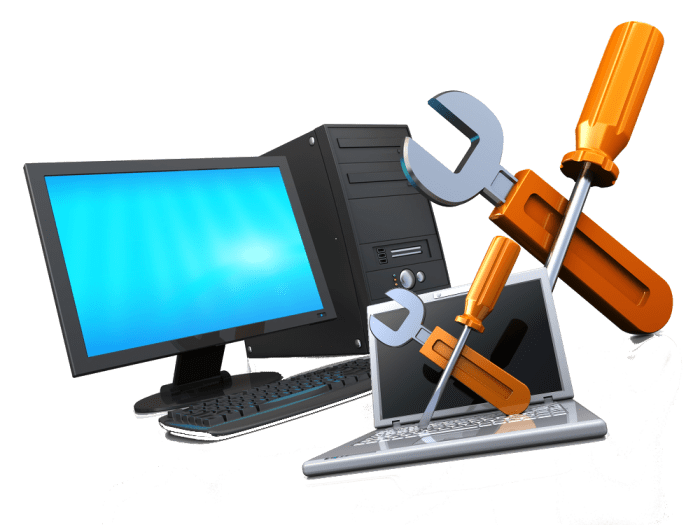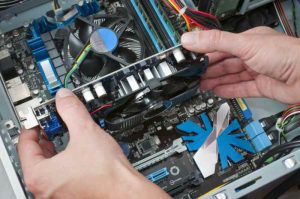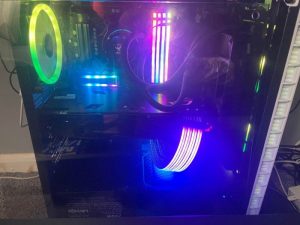
Embark on a journey into the world of computer troubleshooting for businesses, where challenges are met with innovative solutions and expert guidance. From hardware glitches to data communication dilemmas, explore the realm of IT support tailored for the corporate landscape.
Uncover the secrets to maintaining a seamless tech infrastructure and maximizing productivity through effective troubleshooting strategies.
Computer Repair and Consulting
When it comes to running a business, ensuring that your computers are in optimal condition is crucial for smooth operations. Here are some common computer issues faced by businesses and the importance of regular maintenance:
Common Computer Issues Faced by Businesses
- Slow performance: Over time, computers can become sluggish due to the accumulation of temporary files, outdated software, or malware.
- Hardware failures: Components like hard drives, memory modules, or power supplies can fail unexpectedly, causing disruptions in work.
- Software issues: Problems with operating systems, applications, or drivers can lead to crashes and errors.
- Network connectivity problems: Issues with routers, switches, or cables can hinder communication and collaboration among employees.
Importance of Regular Maintenance for Business Computers
Regular maintenance helps prevent these common issues and ensures that your business computers are functioning efficiently. It can also extend the lifespan of your hardware and improve overall productivity. By performing tasks like software updates, virus scans, disk cleanups, and hardware checks, you can avoid costly repairs and downtime.
Tips for Finding Reliable Computer Repair Services for Businesses
- Ask for recommendations from other business owners or IT professionals in your network.
- Check online reviews and ratings of computer repair companies in your area.
- Inquire about the qualifications and experience of the technicians who will be working on your computers.
- Ensure that the repair service offers on-site support or quick turnaround times to minimize disruptions to your business operations.
- Get a detailed quote upfront to avoid any hidden costs or surprises when it comes to billing.
Data Communication
Data communication is the process of exchanging data between two or more devices through a transmission medium such as cables, optical fibers, or wireless signals. In a business context, data communication plays a crucial role in enabling employees to share information, collaborate on projects, and access necessary resources to perform their tasks efficiently.
Common Data Communication Problems
- Network Congestion: When too much data is being transmitted through a network at the same time, it can lead to congestion and slow down communication.
- Bandwidth Limitations: Insufficient bandwidth can restrict the amount of data that can be transmitted, causing delays and interruptions.
- Security Threats: Data breaches, hacking attempts, and unauthorized access can compromise the confidentiality and integrity of business data during transmission.
- Hardware Failures: Malfunctioning routers, switches, or cables can disrupt data communication and lead to connectivity issues.
Solutions for Secure and Efficient Data Communication
- Implement Encryption: Use encryption protocols to secure data during transmission and prevent unauthorized access.
- Regular Network Monitoring: Monitor network traffic to identify and address congestion issues, ensuring smooth data flow.
- Upgrade Bandwidth: Increase bandwidth capacity to accommodate the growing data transmission needs of the business and prevent bottlenecks.
- Firewall Protection: Deploy firewalls to protect the network from external threats and filter out malicious traffic.
- Backup and Disaster Recovery: Implement regular data backups and disaster recovery plans to ensure data integrity and availability in case of communication failures.
Computers E-Books
When it comes to learning about computer troubleshooting for businesses, e-books play a crucial role in providing detailed information and guidance on various topics. Businesses can leverage e-books to educate their employees, improve their IT infrastructure, and enhance their overall productivity.
Essential E-Books for Computer Troubleshooting in Businesses
- “The Complete Guide to Business Computer Maintenance and Troubleshooting” by TechExperts Inc.
-This e-book covers a wide range of troubleshooting techniques specifically tailored for business environments. - “IT Support for Business: A Comprehensive Guide” by ITPro Publications – This e-book offers practical solutions to common computer issues faced by businesses, along with tips for preventive maintenance.
- “Cybersecurity for Small Businesses: A Step-by-Step Guide” by SecureTech Solutions – While not solely focused on troubleshooting, this e-book provides valuable insights into protecting business computers from cyber threats that can cause technical issues.
Leveraging E-Books for Self-Help in Computer Maintenance
E-books can be a valuable resource for businesses looking to empower their employees with the knowledge and skills needed to troubleshoot computer problems effectively. By providing access to relevant e-books, businesses can reduce downtime, improve efficiency, and save costs on external IT support services. Employees can refer to these e-books whenever they encounter technical issues, enabling them to resolve problems independently and expedite the troubleshooting process.
Graphics and Multimedia

Graphics and multimedia have a significant impact on business computer troubleshooting. They play a crucial role in enhancing user experience, communication, and overall productivity in the workplace. From high-quality images and videos to interactive presentations, graphics and multimedia elements are essential for engaging clients, employees, and stakeholders.
Role of Graphics Cards
Graphics cards are vital components in enhancing business computer performance, especially when it comes to handling graphic-intensive tasks such as video editing, 3D modeling, and gaming. A dedicated graphics card can offload the processing power from the CPU, resulting in smoother performance and faster rendering times. It also allows for multiple monitors to be connected, increasing productivity and multitasking capabilities.
- Ensure drivers are up to date: Regularly update the graphics card drivers to ensure compatibility with the latest software updates and applications.
- Check for overheating: Graphics cards can overheat, causing performance issues. Make sure the cooling system is working efficiently and clean out any dust buildup regularly.
- Monitor resource usage: Use task manager or third-party software to monitor the resource usage of the graphics card. High usage could indicate a problem that needs troubleshooting.
- Adjust graphics settings: Optimize the graphics settings in applications and games to balance performance and visual quality. Lowering the settings can improve performance on older or less powerful graphics cards.
Computers Hardware
In a business computer setup, the hardware components play a crucial role in ensuring smooth operations and productivity. It is essential to have reliable hardware that can handle the demands of daily tasks efficiently.
Essential Hardware Components
- Central Processing Unit (CPU): The brain of the computer, responsible for executing instructions and tasks.
- Random Access Memory (RAM): Provides temporary storage for data and programs currently in use.
- Hard Disk Drive (HDD) or Solid State Drive (SSD): Stores data and programs for long-term use.
- Motherboard: Connects all the components of the computer and allows them to communicate with each other.
- Graphics Processing Unit (GPU): Handles the processing of images and videos, crucial for tasks requiring multimedia.
- Network Interface Card (NIC): Enables the computer to connect to a network for communication and internet access.
Comparison of Computer Hardware
| Hardware Component | Types | Suitability for Business |
|---|---|---|
| CPU | Intel Core i5, AMD Ryzen 5 | Both are suitable for general business tasks, with Intel known for reliability and AMD for cost-effectiveness. |
| RAM | 8GB DDR4, 16GB DDR4 | 16GB DDR4 is more suitable for multitasking and running resource-intensive applications in a business environment. |
| Storage | HDD, SSD | SSDs are faster and more reliable than HDDs, making them preferable for businesses that require quick access to data. |
Importance of Hardware Maintenance
Regular hardware maintenance is crucial for business computers to ensure optimal performance and longevity. It includes tasks such as cleaning dust buildup, updating drivers, and checking for hardware failures. Neglecting hardware maintenance can lead to system crashes, data loss, and decreased productivity.
Final Summary

In conclusion, mastering the art of computer troubleshooting for businesses is not just about fixing problems—it’s about empowering your organization to thrive in the digital age. Stay proactive, stay informed, and watch your business soar to new heights of success.
Popular Questions
How often should businesses conduct maintenance on their computers?
Regular maintenance should be performed at least once every few months to ensure optimal performance and prevent potential issues.
What are some signs that indicate a business computer needs repair?
Signs include slow performance, frequent crashes, unusual noises, and overheating. If you notice any of these, it’s time to seek professional help.
How can businesses enhance data communication security?
Implementing encryption protocols, using secure networks, and regularly updating software are key steps to enhancing data communication security.





